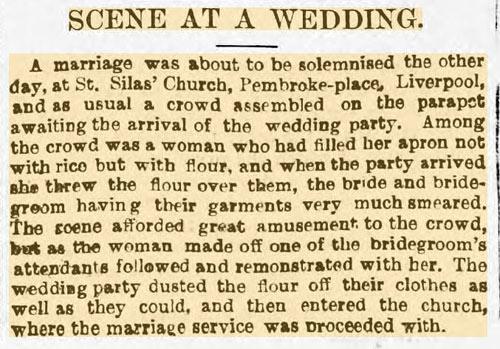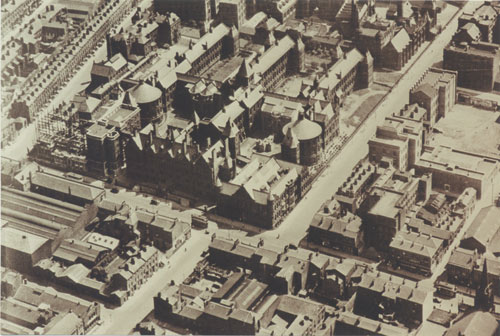Four funerals and a wedding


Aerial view of Pembroke Place c1930s © Liverpool School of Tropical Medicine
An amazing team of volunteers have been delving into historic archives to reveal some of the secrets of Pembroke Place as part our current project, supported by the Heritage Lottery Fund. And there are some very dark secrets indeed!
The annals of Liverpool reveal that the last ever duel fought in Liverpool took place in a field on the corner or Boundary Place and Pembroke Place on 20 December 1806. Major Brooks was killed by Colonel Bolton. It seems a year-long spat developed after Bolton had refused Brooks a pay rise in the regiment. Bolton eventually became fed up of insults being targeted at him and called Brooks to a duel.
The duel was in the evening, a literal 'shot in the dark', so dark they had to load the guns by candlelight. Brooks shot first, missing Colonel Bolton and then Bolton shot, piercing Brooks through the right eye. He died instantly. An inquiry was found that Bolton has committed wilful murder but witnesses to the argument building up to the duel maintained that Brooks had brought it upon himself.
The streets just to the north of Pembroke Place around Oakes Street and Norman Street had become known as 'little hell' by the 1870s. A story from 1878 recorded the tragic death of a woman named Elizabeth Sheridan who was living/working in a 'house of ill repute'. She was found in an alleyway on fire. A witness described that she had fallen asleep on a sofa while smoking and when she awoke on fire she jumped out of a window. She was taken to the Royal Infirmary, but was declared dead on arrival.
Reports from 1884 record the story of a Russian seaman, Ernest Ewerstaedt who murdered his lover, Elizabeth Hamblin, after she called off the relationship. Although she was married to someone else, the couple had been seeing one another for around four years, whenever he was in port. But Hamblin had also seen other men - making him jealous. Then on a visit in 1884 Ewerstaedt went to Hamblin's home on Anson Place, and found she was unwilling to see him. He went out drinking and purchased a dagger, and later that evening killed Hamblin. He was hanged for his crime.
In 1893 there was another violent murder reported, and the explanation of it revealed some very bizarre domestic arrangements. Margaret Wilber was charged with murdering her husband. She described that, when drunk, she had hit him over the head with a chain because he had his trousers on! After he'd been found to be visiting a local brothel, Margaret had taken to chaining her husband in his bedroom upstairs, and putting his clothes in the cellar. As he'd managed to get his clothes on Margaret thought he had wanted to escape - hardly surprising - so she beat him to death!
Then, as now, newspapers reported the ugly, violent, gory or unusual. There are heart-wrenching stories of the deaths of children, and a plethora of crimes.

It wasn't all doom and gloom though, this was a street of thriving businesses and vibrant community, and many happy events, such as weddings. Sometimes though, even those took a slightly strange turn. In 1890 newspapers report a strange case of a woman subverting the tradition of throwing rice over the bride and groom as they arrived at church, and instead throwing flour over them and their attendants and guests from her apron. Dusty and dishevelled the party cleaned themselves up before proceeding into St Silas' Church, Pembroke Place for the service.
It's through the brilliant guidance of our professional researchers, Lucy Kilfoyle, Richard McDonald and Judith Beastall, and the wonderful detective work of our volunteers that these stories are being revealed! This Liverpool School of Tropical Medicine and Museum of Liverpool project is currently seeking further funding to enable us to create an exhibition about Pembroke Place at the Museum of Liverpool.
